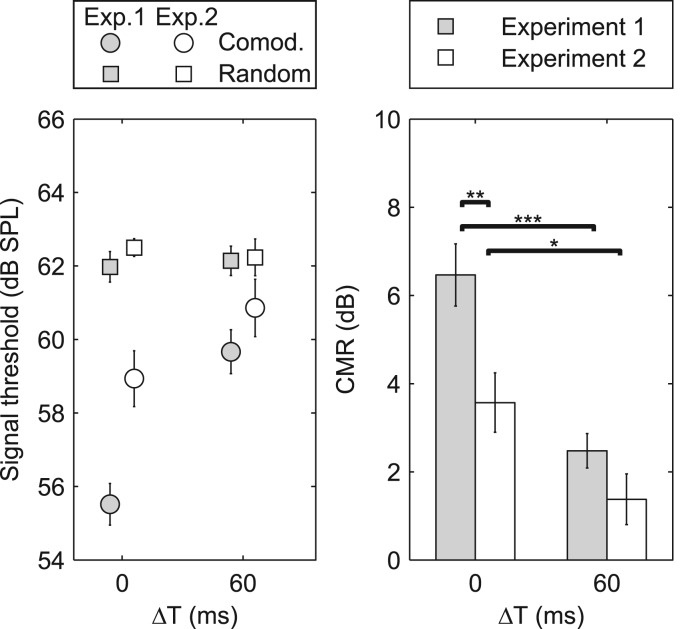Figure 3.
Results from experiment 2 (open symbols), with data from experiment 1 replotted for comparison (gray symbols) for conditions with ΔT of 0 and 60 ms. The left panel shows the detection thresholds for the comodulated (circles) and random (squares) ongoing envelopes of the final noise bursts. The bars in the right panel show the CMR, and the error bars indicate ±1 standard error of the mean between subjects. The asterisks in the right panel show the results of post hoc (Tukey-Kramer) comparisons of CMR, where *, **, and *** indicate p < 0.05, p < 0.01, and p < 0.001, respectively. In experiment 1, both the precursors and the noise bursts concurrent with the target signal had either random or comodulated ongoing envelopes. In experiment 2, the precursors always had random ongoing envelopes, and only the noise bursts concurrent with target signal were random or comodulated.

